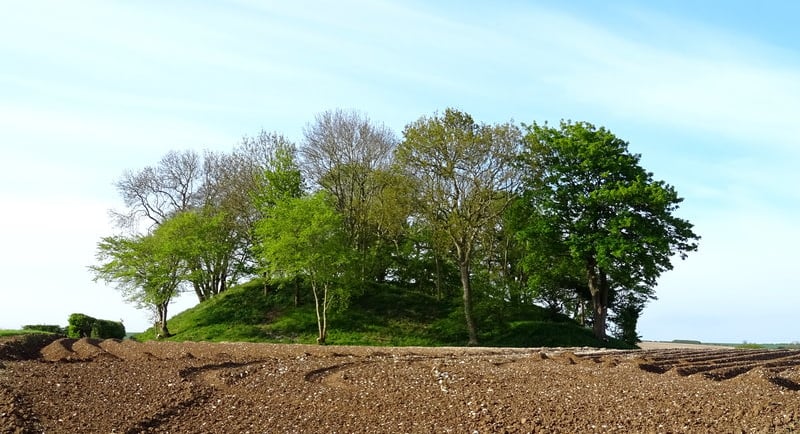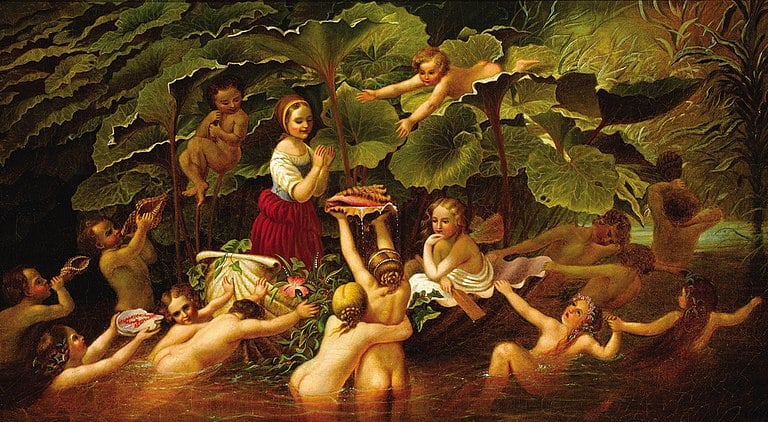The Fairy Mythology of Willy Howe
There are several tales about fairies that lived in Willy Howe.
FOLKLORE FEATUREDTHWINGWOLD NEWTON


Willy Howe is a large, 7.5m high, neolithic round barrow partway between Wold Newton and Burton Fleming and just within the Thwing civil parish boundary. Although it has been excavated on at least two occasions, (in 1857 by Lord Londesborough and again by Rev. Greenwell in 1887) nothing has been found there. This is in contrast to the comparable Duggleby Howe, where bones, ashes and grave goods were uncovered. However, there are several tales about fairies that lived in Willy Howe.
I should point out that, unlike today, fairies were not thought of as tiny, winged creatures flitting about like J. M. Barry’s ‘Tinkerbell” and as depicted by Disney. They were pictured as human size or smaller, often malevolent (stealing babies, tricking, and trapping people) and sometimes benevolent. It is only from Victorian times that fairies are portrayed with wings, in earlier mythology, wings are rarely found. In some so called “scholarly writing” it was also claimed that some fairies were giants.


This painting by James Hope (1818-1892) is titled ‘Maiden and Fairies’ and depicts fairies as human sized.
The most well-known tale of the Willy Howe fairies was first recorded in the 1100’s by William of Newburgh in his tome, “Historia rerum Anglicarum” ("History of English Affairs"). He states that a local man while riding home one night, heard the sound of merriment coming from the mound. He stopped to investigate and found an open door in the side of the hill through which he could see people feasting and singing. While watching the revelries, he was noticed by a servant who offered him a drink in a goblet made from a strange material. The drinking vessel was said to be an unusual colour and have a strange form. He initially took the drink that was handed to him but then thought better of it and wisely tipped the contents away. It was said that if you partook of food or drink at a fairy feast, you would never be able to leave. He rode away, post-haste, with the goblet still in his hand, and pursued by a mob of angry fairies. By putting the Gypsey Race between himself and his pursuers, he made himself safe as fairies are unable to cross flowing water.
The legend is that the fairy drinking cup made its way to the King of England, and then to King David of Scotland before later being given to Henry II. Then the trail goes cold.
A second legend involves the discovery of a fairy treasure chest. Although every effort was made to remove it from the ground, it just kept sinking deeper. The story states that a chain was attached to the chest and a team of horses and bullocks, stretching all the way to Burton Fleming, tried to pull it out - but failed. The chest eventually sank from sight. A different rendition says it was a team of horses a quarter mile long, attached with iron traces that snapped before the chest sank.
Fairy gold appears in another story. Apparently, a gold coin was left out for a man that a female fairy had taken a liking to. She told him that every morning he should walk to the top of Willy Howe and he would find a gold coin. The one proviso was that he should never disclose where the money came from. He did this regularly and every day found a guinea waiting for him. Eventually he could keep the secret no longer and took a friend with him to the top of the mound. He not only lost his regular gold coin but was also punished by the fairies for breaking the pact.
As a footnote to these tales, drinking cups have often been found during the excavation of burial mounds, as have other vessels and containers for food and cremation remains as well as treasure. The gold coin story resonates with the biblical forbidden fruit in the Garden of Eden and could be a retelling.
Daderot, Public domain, via Wikimedia Commons
JThomas / Willy Howe Neolithic round barrow
